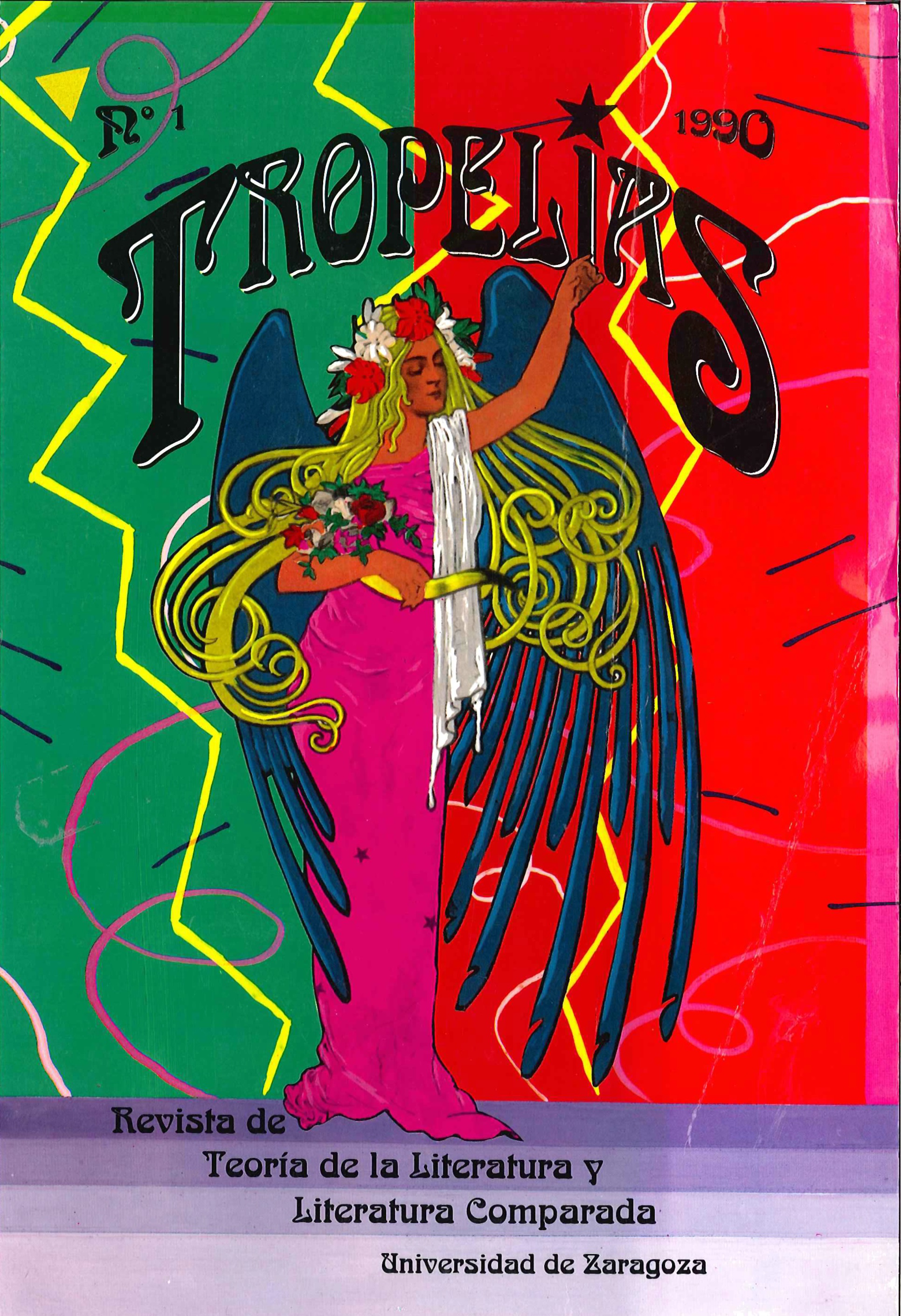Modernismo and modernity in the rhythmical theory of Viriato Díaz Pérez
DOI:
https://doi.org/10.26754/ojs_tropelias/tropelias.199012718Keywords:
modernismo, modernity, rythmic theory, Viriato Díaz PérezAbstract
The articIe annalyzes Naturaleza y evolución del lenguaje rítmico (1900), work submitted as a Ph. D. Dissertation by the modernist writer Viriato Diaz Pérez. This book departs from the common descriptivism that characterizes other metrical studies from the same years. Díaz Pérez focuses his atention in the basic element of poetic expressions, the rhythm, and tries to capture its essence. The core of his dissertation deals with the historical evolution of rhythmical patterns and aIl through his argumentation Díaz Pérez shows a strong debt with "fin de siècle" sensibility. Such is the case when he studies the contemporary attempts to restructure the poetic verse starting from metrical cIauses as basic units. However, it is the first part of his Dissertation, and his attempt to annalyze the nature of rhythm, which makes Viriato Díaz Pérez a surprising predecessor of modernity. The importance of perception in the definition of poetic rhythm, the conceptual difference between psychological and phonetical rhythm, his proposal of a law of economical attentiviness and unfulfillment of expectations, his recognition of only a blur limit between verse and prose (being the basic difference the psychological anticipation of poetic rhythm), the study of meaning of metrical rhythm... are some of Díaz Pérez basic contributions that anticipate the theories of the Russian Formalists and therefore all contemporary metrical studies.
Downloads
Downloads
Published
How to Cite
Issue
Section
License
Copyright (c) 2018 María Pilar Celma Valero

This work is licensed under a Creative Commons Attribution 4.0 International License.
Los artículos enviados a la revista Tropelías deben ser originales e inéditos, no publicados previamente en cualquier soporte. Únicamente se aceptará material publicado total o parcialmente con anterioridad, o que esté en proceso de evaluación en otra revista, si se hace constar la causa de tal duplicación y se facilita la fuente donde ha aparecido dicho artículo.
Las imágenes que se incluyan en los artículos estarán libres de derechos de reproducción y, en caso contrario, los autores deberán presentar los permisos para su publicación y asumir los pagos derivados de ello.
Los artículos y reseñas publicados en la revista Tropelías pueden ser incluidos en repositorios temáticos o institucionales desde el momento de su publicación, sin modificación alguna e indicando claramente su procedencia.


